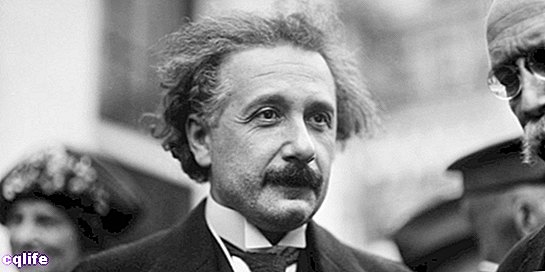We explain what modern physics is, its goals and how it differs from classical physics. Also, what are its branches.

What is modern physics?
In the scientific field, we speak of the physical modern to refer to contemporary studies on the fundamental laws of the universe, which take as their starting point the formulation at the end of the 19th century and the beginning of the 20th of two revolutionary theories on the matter:
- Max Planck's quantum theory of 1900.
- The theory of relativity by Albert Einstein from 1905.
To this is often added Heisenberg's uncertainty relation of 1927. In any case, all previous physics studies are known as classical physics.
However, this difference is not merely historical, as it might seem. On the one hand, modern physics differs from classical physics due to the notion of "quantum of action" (Wirkungsquantum) proposed by Planck, who proposed it as a level of Energy minimum possible.
That is, according to this modern approach, the energy in the universe could be divided into minimal and indivisible units (each called a "quantum" or quantum), while in classical physics energy was continuous and indivisible.
On the other hand, modern physics replaced the idea of a deterministic physics, in which all the phenomena of the universe could be described as the result of a cause and an effect, by a physics of indeterminacy and inaccuracy. Thus, modern physics usually speaks of the probabilities of occurrence of a phenomenon, since it deals with the mysterious laws that govern Matter and energy.
The latter is due to the fact that classical physics largely studied situations that the human senses could encompass, that is, situations from a macroscopic point of view.
Instead, modern physics delves into more complicated regions of the universe, such as subatomic matter and the wave-particle behavior of the universe. matter, or the physical phenomena that occur at speed of light. In these scenarios the classical laws cease to be useful.
On the other hand, one of the main aspirations of modern physics is to achieve the integration in a single harmonic theory of all known natural forces: the gravity, the electromagnetism, the strong nuclear forces and the weak nuclear forces.
This unifying theory, which does not yet exist, would be known as the "theory for everything". This theory would serve to understand both the relationships between the tiny particles of matter, and those between the colossal stars of the universe.
Branches of modern physics
Modern physics is divided into two main branches, each of which has in turn much more specialized subfields.
- The quantum mechanics, dedicated to the study of scales very small spatial, such as atomic and subatomic systems, or their interaction with electromagnetic radiation, always as observable phenomena. Its fundamental principle is that all forms of energy are released in regular units known as "quanta". Within his areas of interest are nuclear physics, atomic physics or molecular physics, for example.
- The theory of relativity, dedicated to the study of gravity, that is, of physical events both in the weather as in space, but always relative to a variable observer. This means that time and space are not invariable but relative, unlike what classical physics held.This subfield of study is based on the two great theories of Einstein: the Theory of Special Relativity of 1905 and the Theory of General Relativity of 1915. Its field of application is, mainly, that of cosmology, that is, the study of the universe as a whole and on a large scale.
